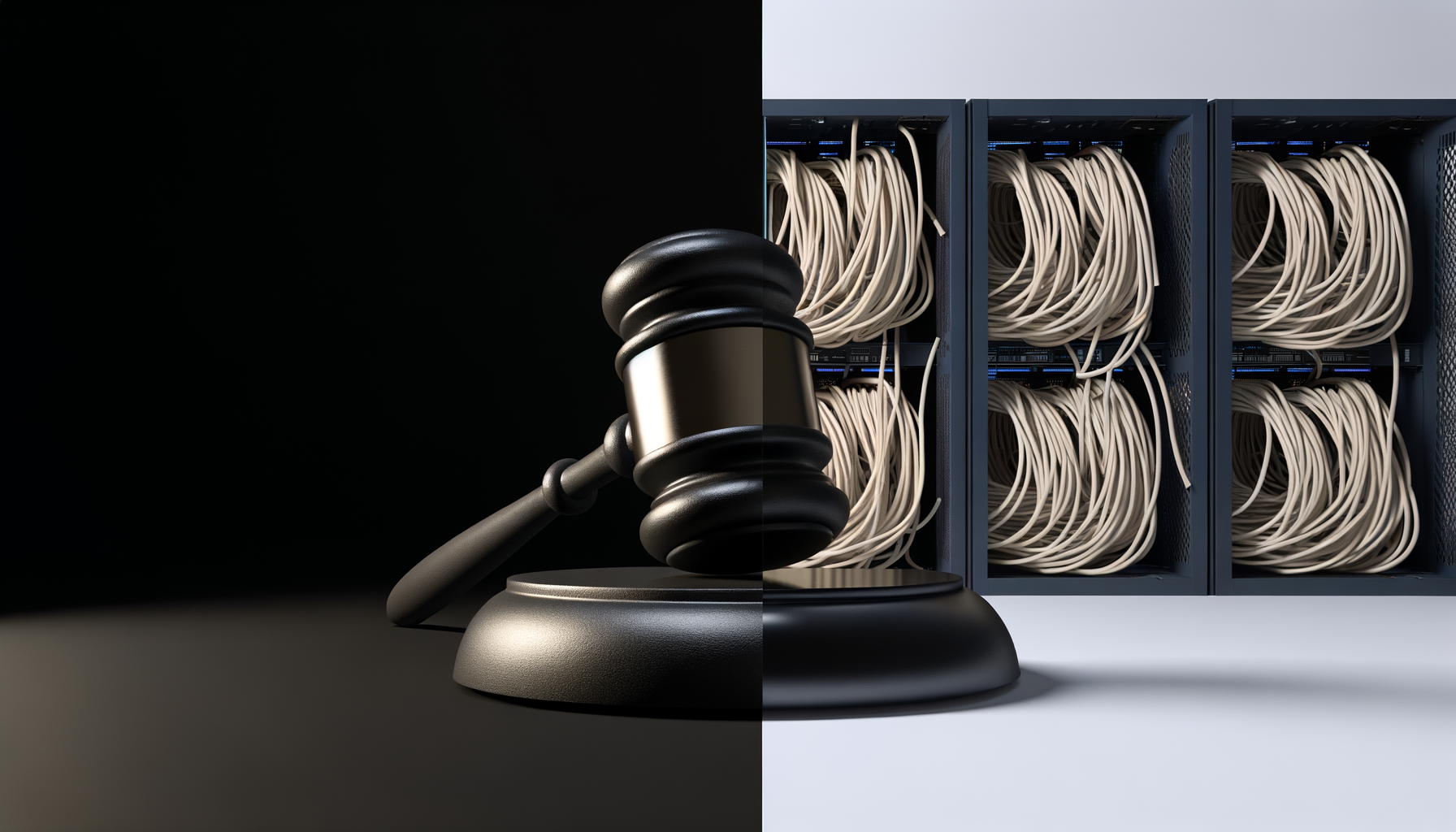Your entire AI compliance framework just became a legal time bomb. The federal safety net vanished overnight, and your engineers are now walking a tightrope without a net below.
The Regulatory Vacuum That Changes Everything
On January 20, 2025, with a single stroke of a pen, Executive Order 14110 disappeared. The Biden administration’s comprehensive AI governance framework—15 months in the making, involving hundreds of stakeholders, establishing clear federal guidelines—gone. What replaced it? Nothing. And that nothing is precisely what should terrify every CTO and AI team lead reading this.
The absence of regulation isn’t freedom. It’s a minefield where every step could trigger catastrophic liability. When federal guardrails vanish, state attorneys general sharpen their knives. When industry standards dissolve, plaintiff lawyers circle like sharks. When compliance frameworks evaporate, your engineering decisions become legal precedents.
The paradox of deregulation: Less government oversight means exponentially more corporate liability. Your AI systems just became uninsured nuclear reactors.
Why This Isn’t 2016 Redux
Those comparing this to Trump’s first-term deregulation push fundamentally misunderstand the AI landscape transformation. In 2016, AI was still largely experimental. GPT-2 didn’t exist. Computer vision struggled with basic tasks. Recommendation algorithms were crude. Today? AI makes hiring decisions, diagnoses diseases, approves loans, drives vehicles, and generates content indistinguishable from human creation.
The stakes have changed by orders of magnitude. Consider these critical differences:
- AI deployment velocity increased 50x since 2016
- Model capabilities grew from narrow task completion to general reasoning
- Integration depth expanded from peripheral features to core business logic
- Liability exposure shifted from hypothetical to actualized harm
- Public awareness transformed from curiosity to active concern
The California Effect Multiplied
Without federal standards, state-level regulation becomes the de facto national framework—but fragmented across 50 jurisdictions. California’s SB 1001, Colorado’s AI bias auditing requirements, Illinois’s biometric protections, New York City’s hiring algorithm rules—each state racing to fill the federal void with incompatible, overlapping, contradictory requirements.
Your AI system that’s compliant in Texas could be illegal in Massachusetts. Your model training legal in Florida might violate Washington privacy laws. Your deployment strategy perfect for Arizona could trigger penalties in Vermont.
The Engineering Team’s New Reality
Forget everything you knew about AI deployment risk assessment. The rulebook doesn’t just have new pages—it’s being written in real-time by your decisions. Every technical choice now carries potential legal ramifications that won’t be clear until the lawsuits arrive.
Documentation Becomes Evidence
That Slack conversation about model accuracy? Discoverable. The JIRA ticket discussing bias mitigation? Exhibit A. Your team’s standup notes about edge cases? Smoking gun. In the absence of regulatory safe harbors, every internal discussion becomes potential litigation ammunition.
Engineering teams must now think like lawyers while coding like developers. Consider this nightmare scenario matrix:
| Technical Decision | Previous Risk (With Fed Guidelines) | Current Risk (Regulatory Vacuum) |
|---|---|---|
| Training data selection | Compliance checklist | Discrimination lawsuit magnet |
| Model architecture choice | Performance optimization | Explainability litigation trap |
| Accuracy threshold setting | Business requirement | Negligence claim trigger |
| Feature engineering | Technical consideration | Bias accusation evidence |
| Deployment timing | Sprint planning | Duty of care violation |
The Liability Shift No One’s Discussing
Here’s what corporate counsel won’t tell you directly: the executive order didn’t just remove regulations—it transferred risk from government oversight to corporate accountability. When NIST AI standards vanish, when federal testing requirements disappear, when safety frameworks dissolve, the liability doesn’t evaporate. It concentrates.
The Insurance Industry’s Response
Cyber insurance providers are already recalibrating AI coverage. Premiums for AI-related liability insurance increased 40% within 48 hours of the executive order. Coverage exclusions expanded. Deductibles skyrocketed. Why? Because actuaries understand what many CTOs haven’t grasped: unregulated AI is uninsurable AI.
Major carriers are implementing new AI-specific exclusions:
- Algorithmic discrimination claims
- Model hallucination damages
- Automated decision harm
- Training data misuse
- Bias amplification injuries
The International Compliance Nightmare
While America abandons AI governance, the EU’s AI Act enforcement begins March 2025. China’s algorithmic recommendation regulations tighten. The UK’s principles-based approach evolves. Your multinational AI deployment just became a regulatory arbitrage nightmare.
Data Residency Meets Model Governance
The complexity compounds when considering cross-border AI operations:
// Pseudocode for new compliance reality
function deployAIModel(model, location) {
if (location.includes('EU')) {
enforceAIAct(model);
requireConformityAssessment();
mandateFundamentalRights();
} else if (location.includes('US')) {
// WARNING: No federal standards
checkStateRegulations(location.state);
assessLiabilityExposure();
purchaseAdditionalInsurance();
} else if (location.includes('China')) {
submitAlgorithmRegistry();
implementRecommendationTransparency();
}
// The new reality: defensive deployment everywhere
implementMaximalDocumentation();
createAuditTrails();
establishLiabilityFirewalls();
}
Building Defensible AI in a Regulatory Vacuum
The path forward requires radical rethinking of AI development practices. Without federal guidelines providing safe harbors, every deployment must be defensible in court, not just compliant with regulations.
The New Development Imperatives
1. Extreme Documentation
Every decision, every trade-off, every alternative considered must be documented with litigation defense in mind. Your git commits need lawyer-readable explanations. Your model cards must anticipate cross-examination.
2. Defensive Architecture
Build systems assuming they’ll be dissected by expert witnesses. Implement explainability not as a feature but as a legal requirement. Create audit mechanisms that capture intent, not just outcomes.
3. Proactive Harm Assessment
Without regulatory frameworks defining acceptable risk, you must define and defend your own risk tolerance. Document why specific accuracy thresholds were chosen. Explain why certain biases were deemed acceptable. Justify every edge case handling.
The Board-Level Conversation
This isn’t a technical issue anymore—it’s an existential corporate risk. Boards of directors must grapple with questions they’re unequipped to answer:
- What’s our liability exposure for AI decisions made without human oversight?
- How do we quantify reputational risk in an unregulated AI landscape?
- Should we pause AI deployments until regulatory clarity emerges?
- Can we afford the competitive disadvantage of ethical AI development?
- Who bears personal liability when AI systems cause harm?
The Coming Litigation Wave
Plaintiff attorneys are already mobilizing. Class action firms are hiring AI experts. Litigation funders are capitalizing specialized AI lawsuit funds. The first wave will target:
Hiring Algorithms – Without EEOC AI guidance, every rejected candidate becomes a potential discrimination claim.
Healthcare AI – Medical malpractice meets algorithmic decision-making in a regulatory void.
Financial AI – Credit decisions, trading algorithms, risk assessments—all exposed without federal frameworks.
Content Generation – Defamation, copyright, impersonation claims multiply in the absence of clear standards.
The Path Forward: Defensive Innovation
The new reality demands a fundamental shift in how we approach AI development. Innovation must coexist with defensive positioning. Speed must balance with documentation. Capabilities must align with explicability.
Immediate Actions for AI Teams
- Audit all existing AI deployments for liability exposure
- Implement comprehensive decision logging for every model
- Create internal AI ethics boards with legal representation
- Develop state-by-state compliance matrices
- Establish AI-specific insurance coverage reviews
- Document all training data provenance and selection criteria
- Build explainability into every system architecture
- Create litigation-ready audit trails for all AI decisions
- Implement human-in-the-loop fallbacks for critical decisions
- Develop clear AI incident response procedures
The Uncomfortable Truth
The executive order’s reversal didn’t liberate AI innovation—it shackled it to undefined liability. Every AI team now operates in a legal gray zone where innovation and litigation risk are inseparable. The companies that survive won’t be those that move fastest, but those that build most defensibly.
Your competitors are either paralyzed by this new reality or recklessly ignoring it. Neither response is sustainable. The winning strategy requires threading the needle between innovation and liability, between capability and accountability, between speed and safety.
The New Competitive Advantage
In this regulatory vacuum, the companies with the most robust internal governance will paradoxically have the most freedom to innovate. Strong self-regulation becomes the shield that enables aggressive deployment. Comprehensive documentation becomes the armor that protects against litigation. Ethical AI development transforms from constraint to competitive moat.
The absence of external regulation makes internal governance not just important, but existentially critical. Your AI ethics framework is now your legal defense strategy.
Conclusion: Navigating the Perfect Storm
The AI governance whiplash creates unprecedented challenges for technology leaders. Federal deregulation didn’t simplify AI deployment—it complicated it exponentially. The burden of defining acceptable AI behavior now falls entirely on individual companies, with courts as the ultimate arbiters.
This isn’t the deregulation victory some celebrated. It’s a governance vacuum that transforms every AI deployment into a potential legal battlefield. The companies that recognize this reality and adapt their development practices accordingly will survive. Those that mistake the absence of rules for the absence of risk will become cautionary tales.
Your AI strategy must evolve from asking “what’s allowed?” to “what’s defensible?” From “what’s possible?” to “what’s prudent?” From “what’s innovative?” to “what’s insurable?”
The federal AI governance framework is gone, but the liability it previously absorbed didn’t disappear—it transferred directly to your engineering decisions, and the courts are now your only compliance checkpoint.





